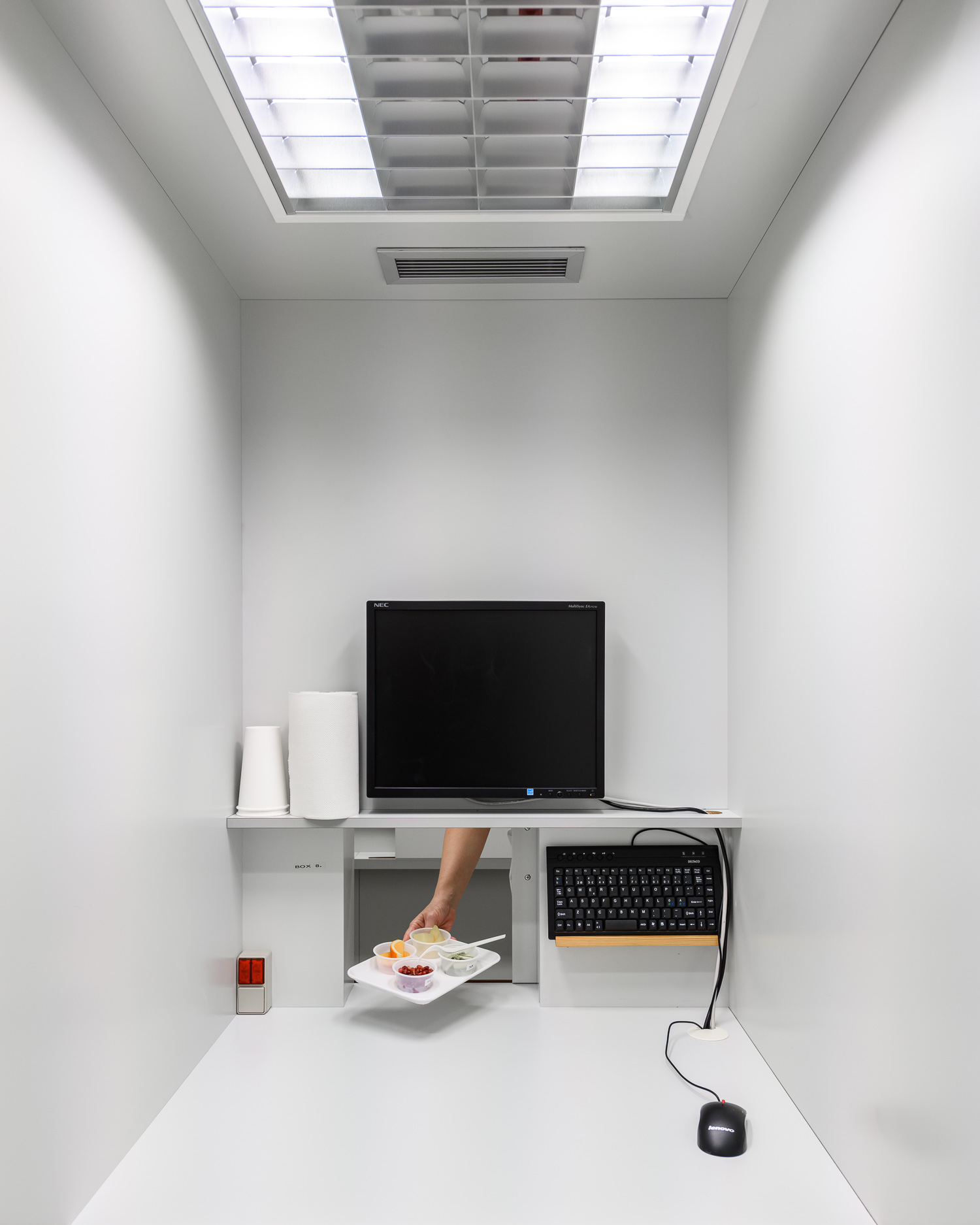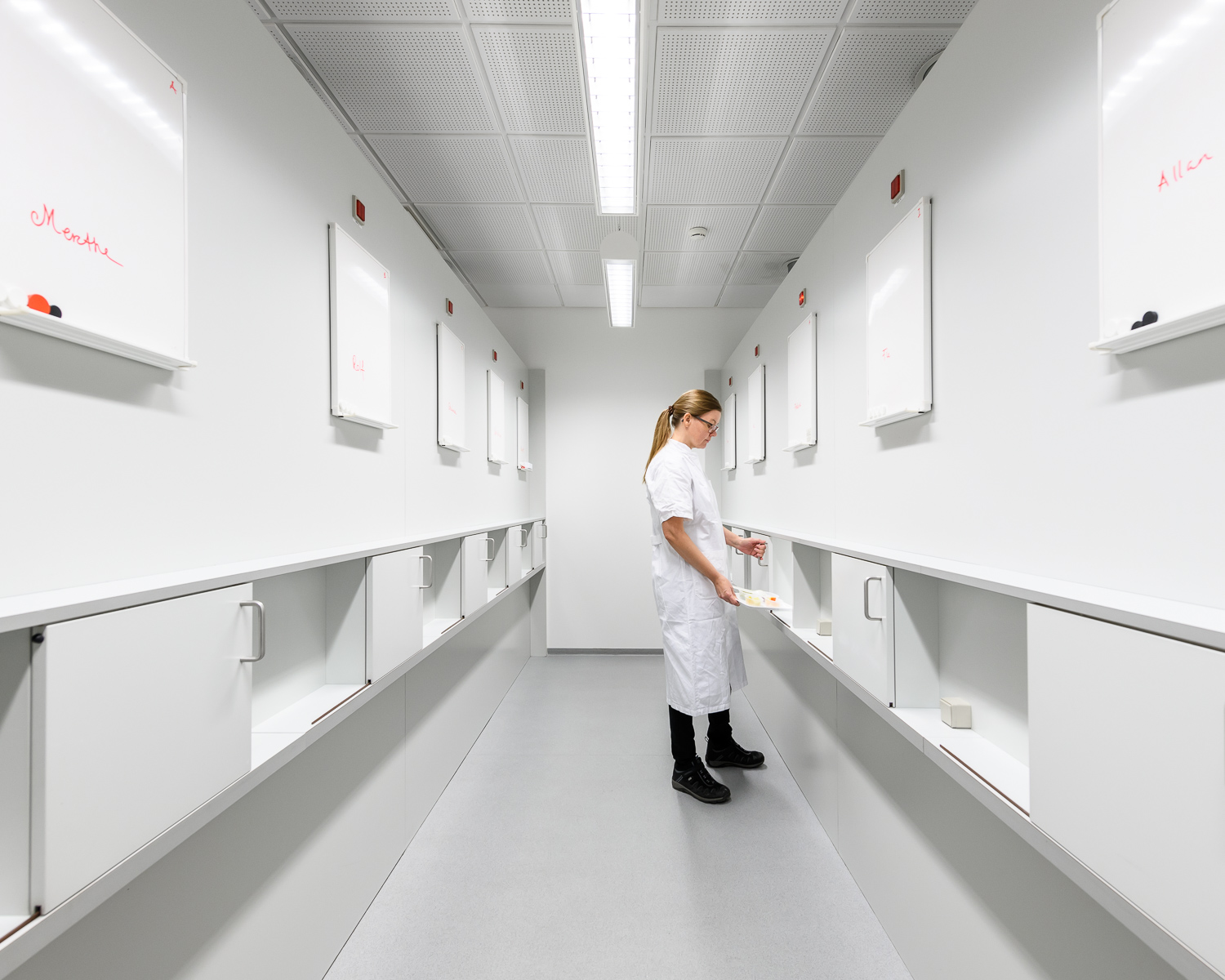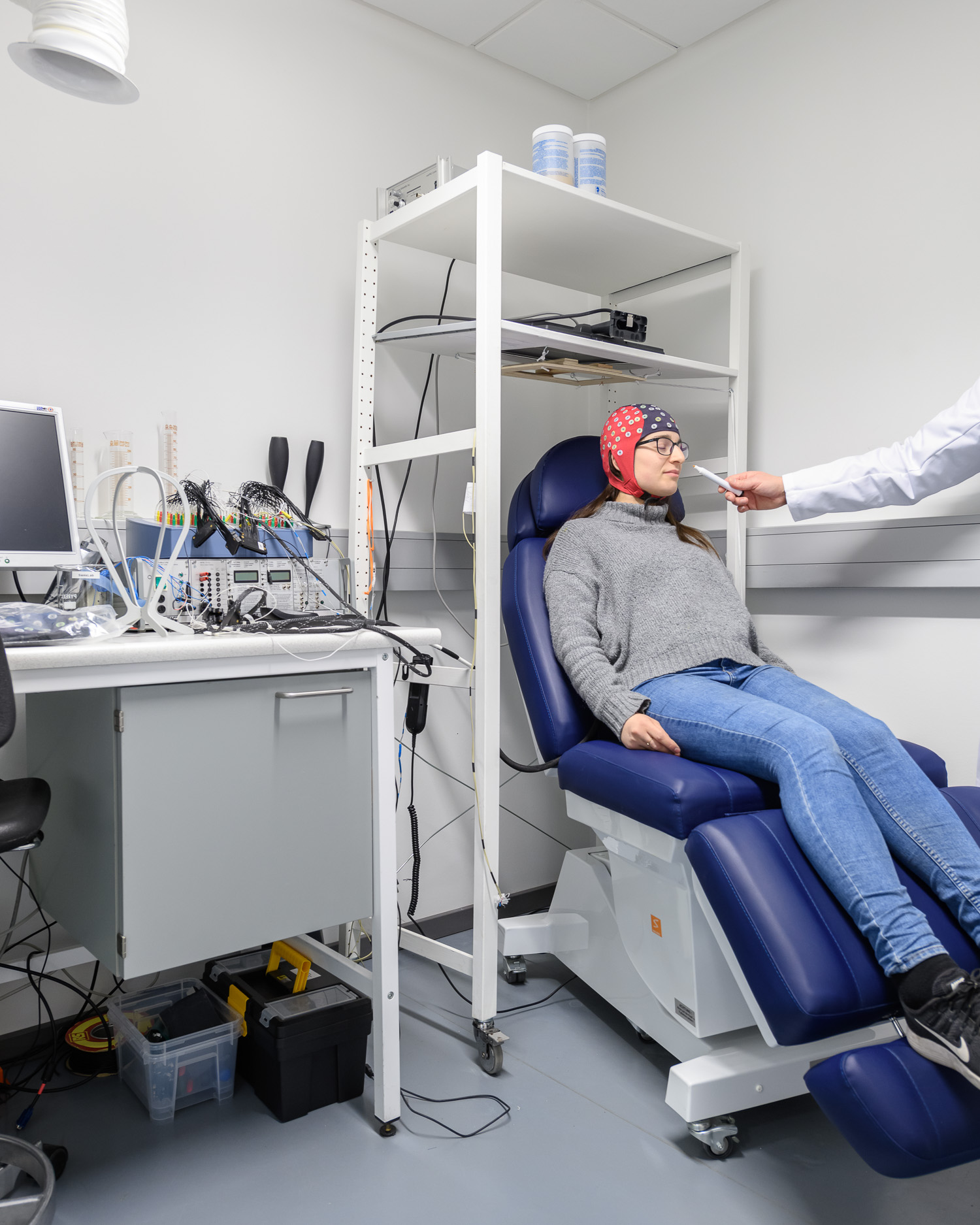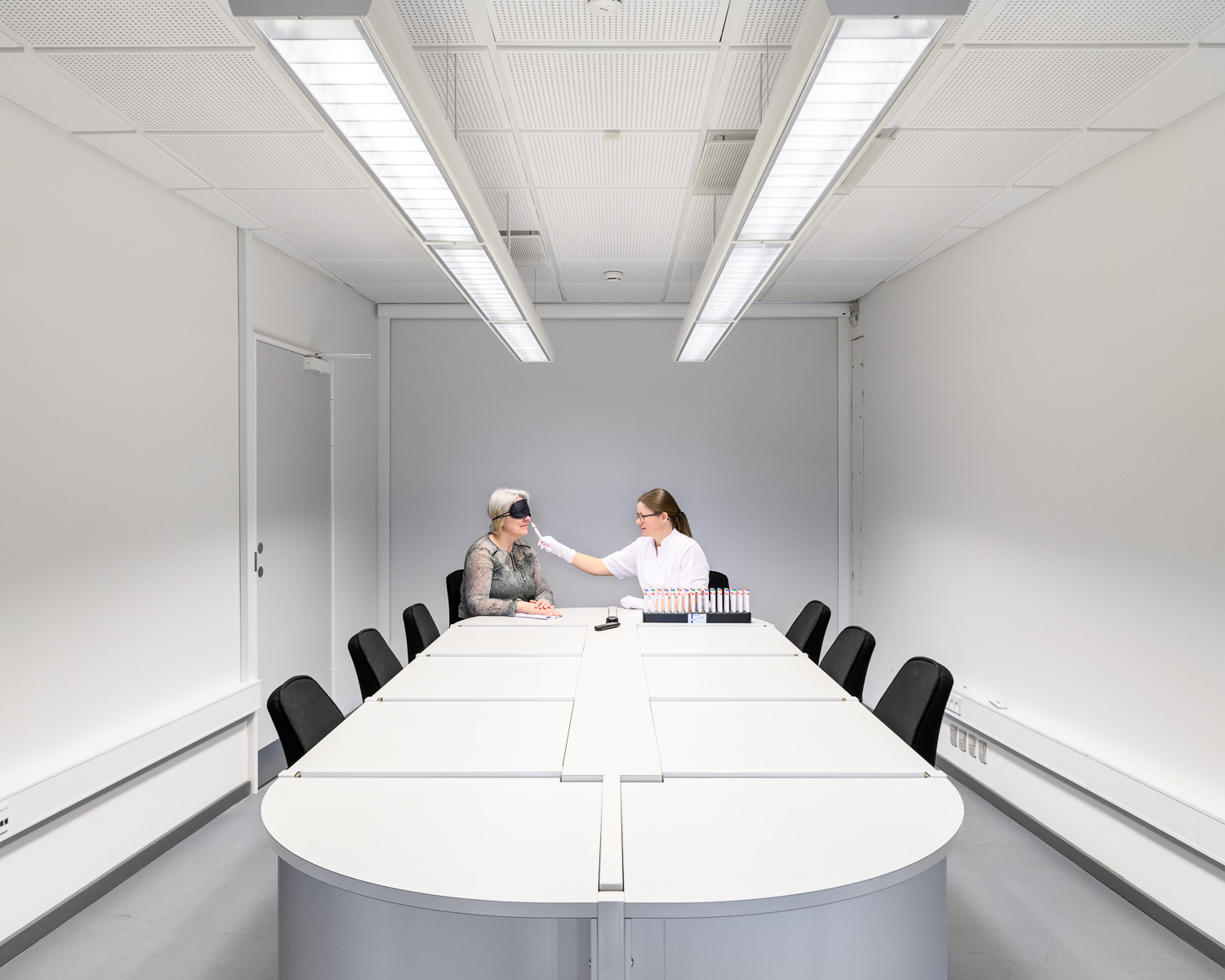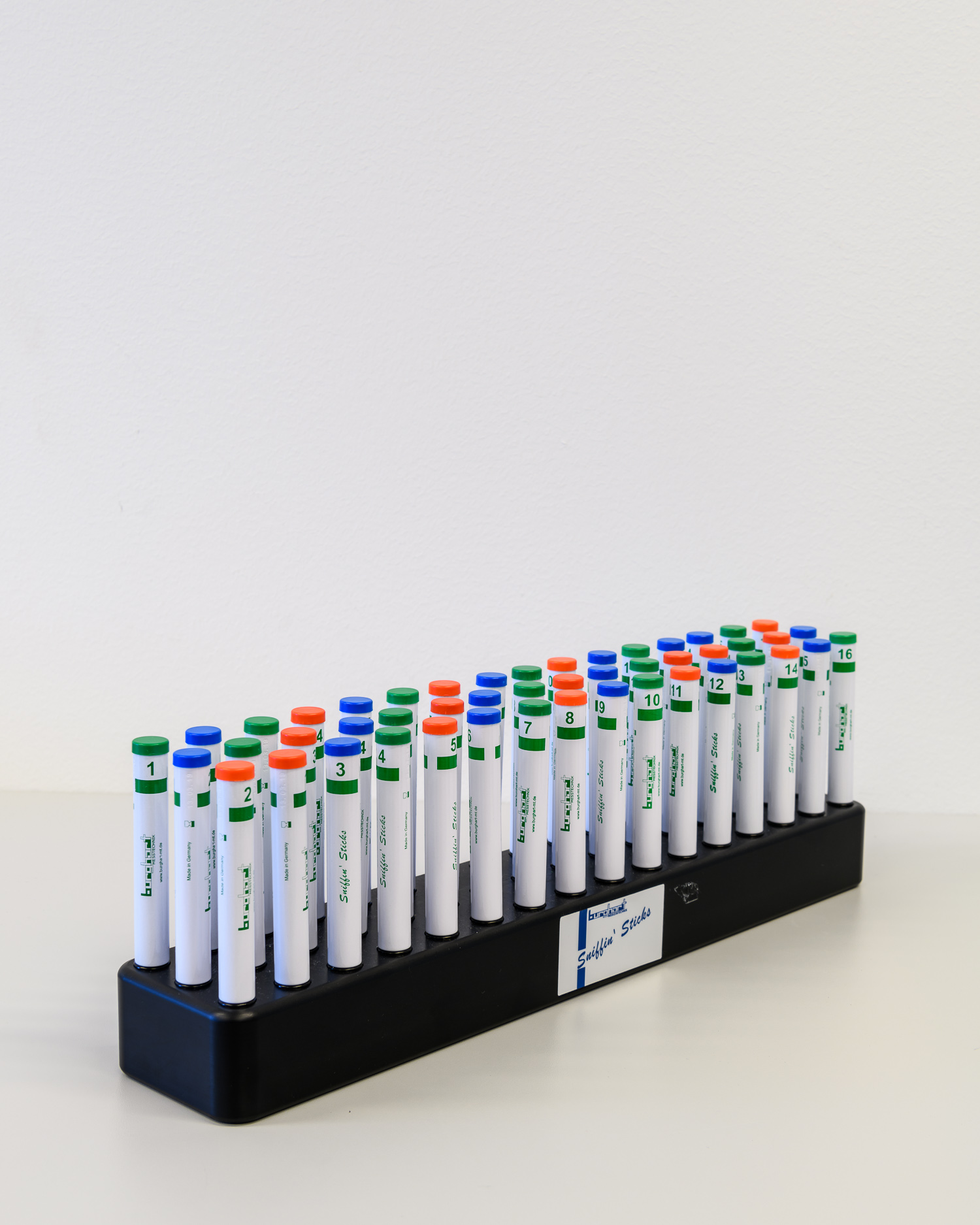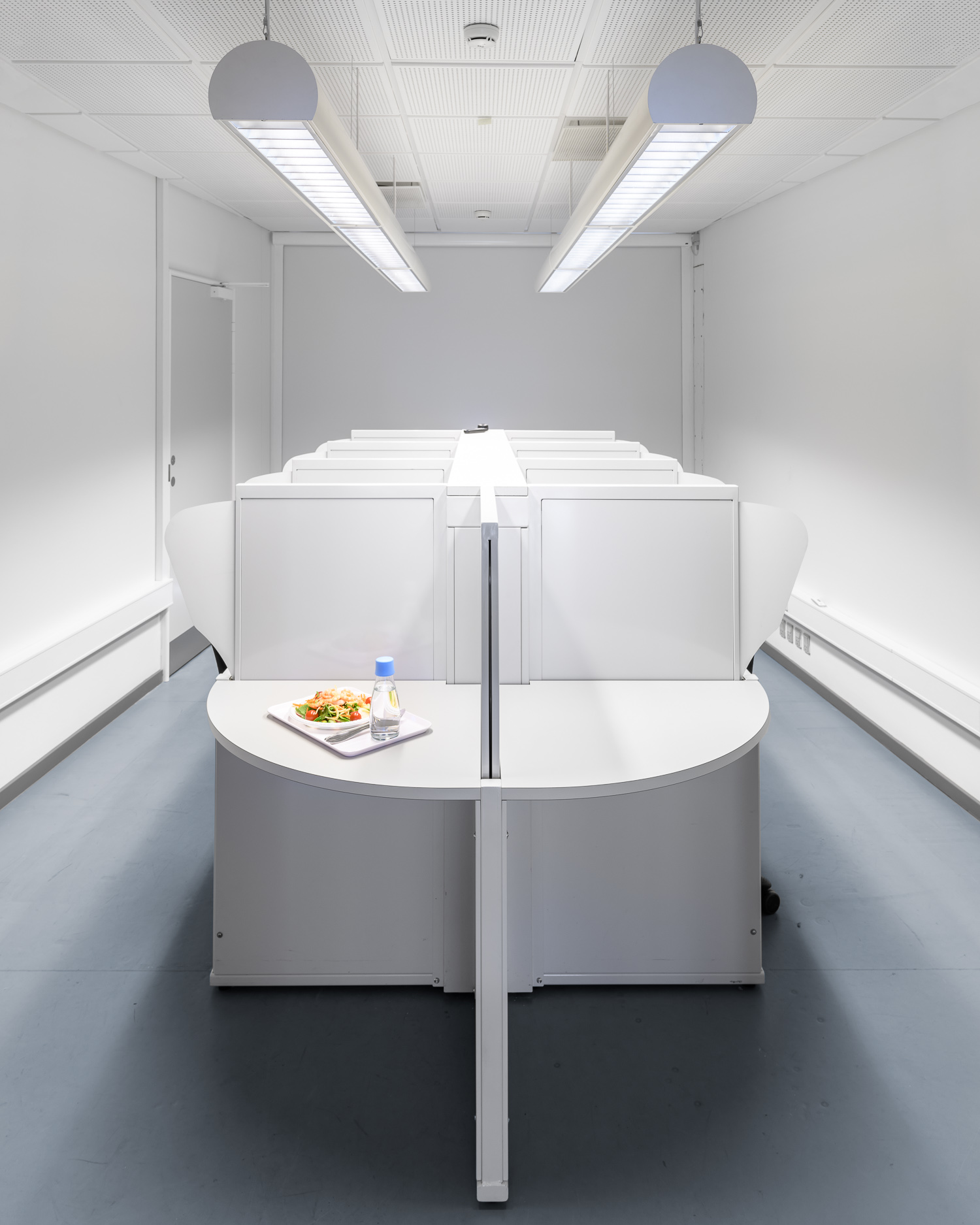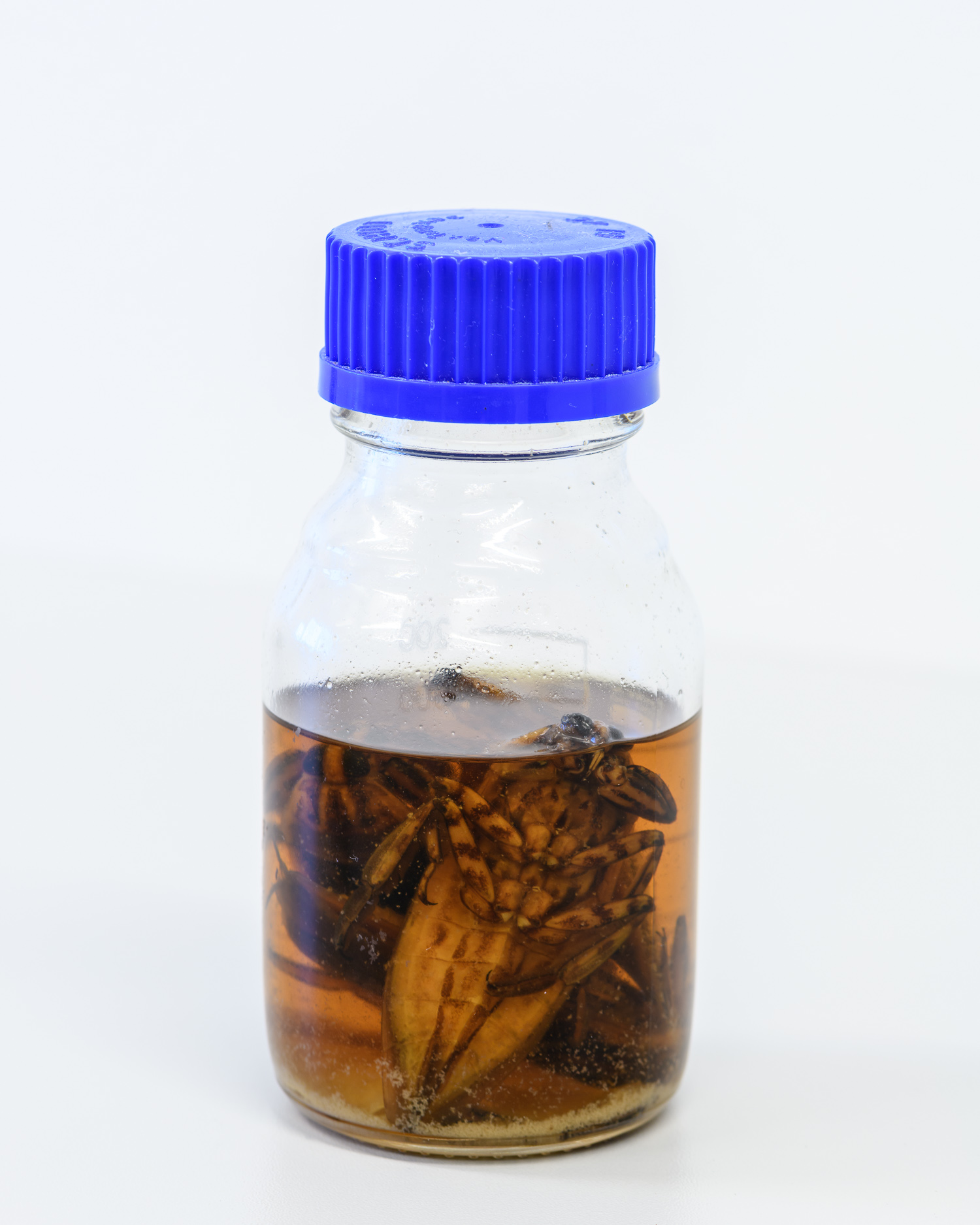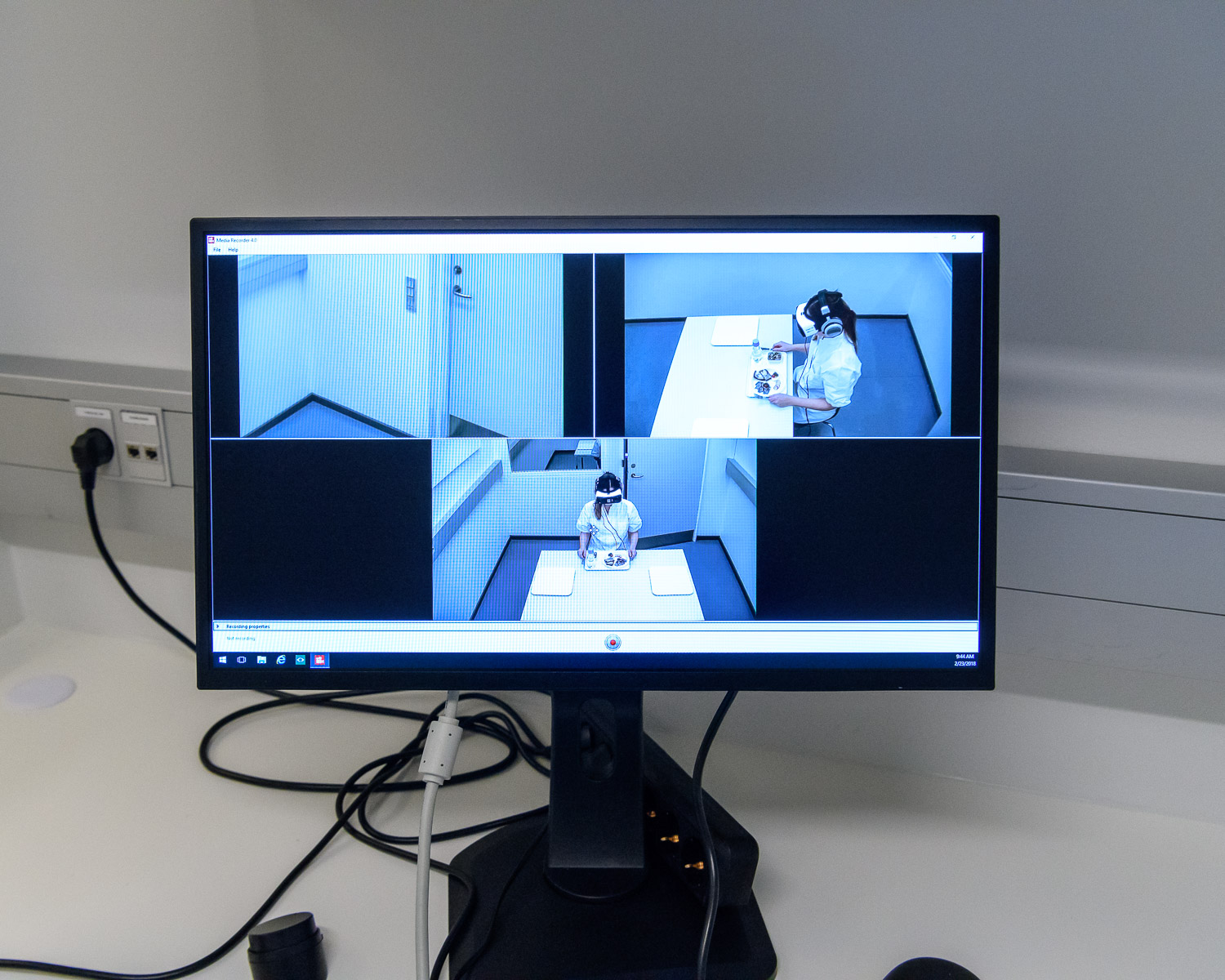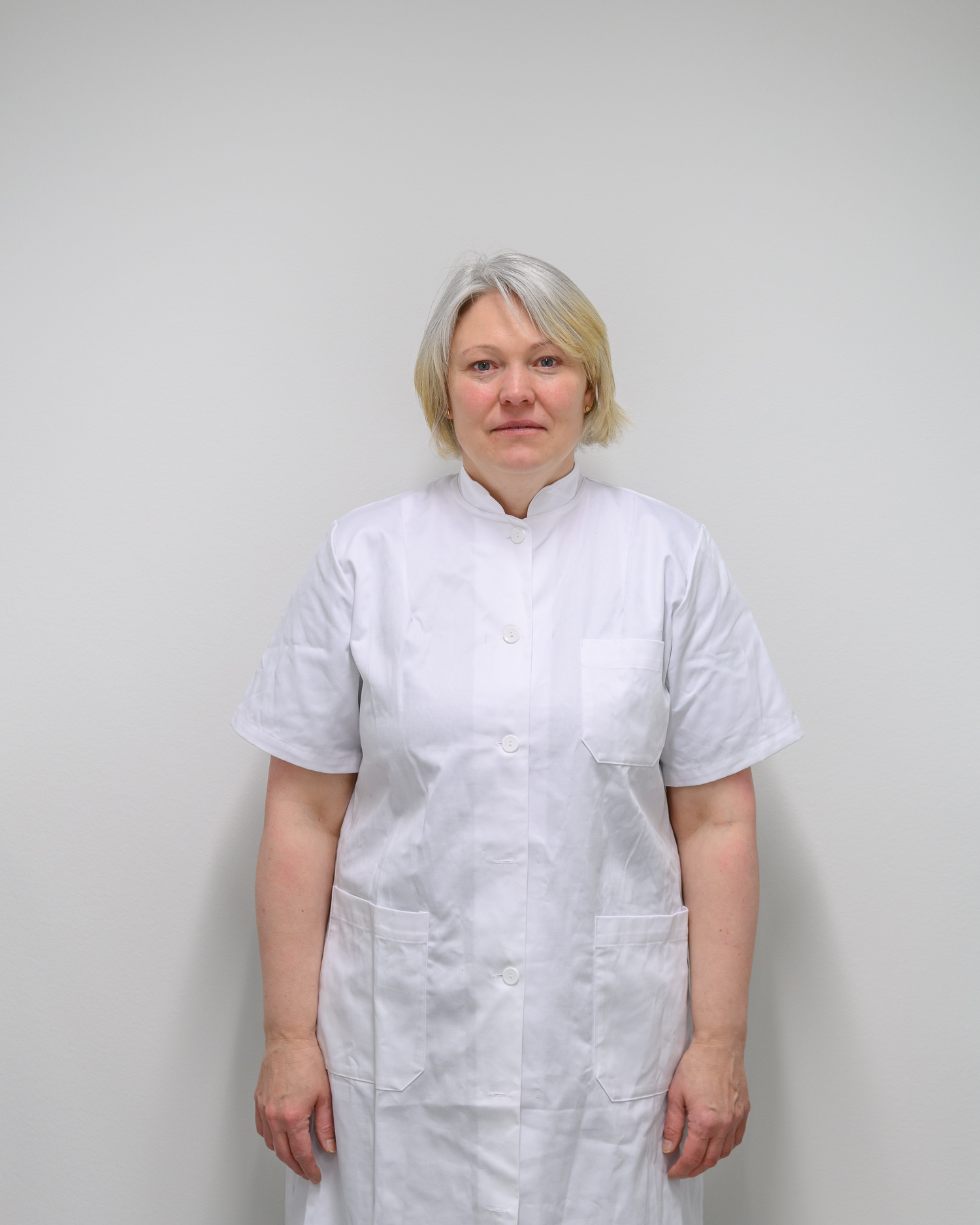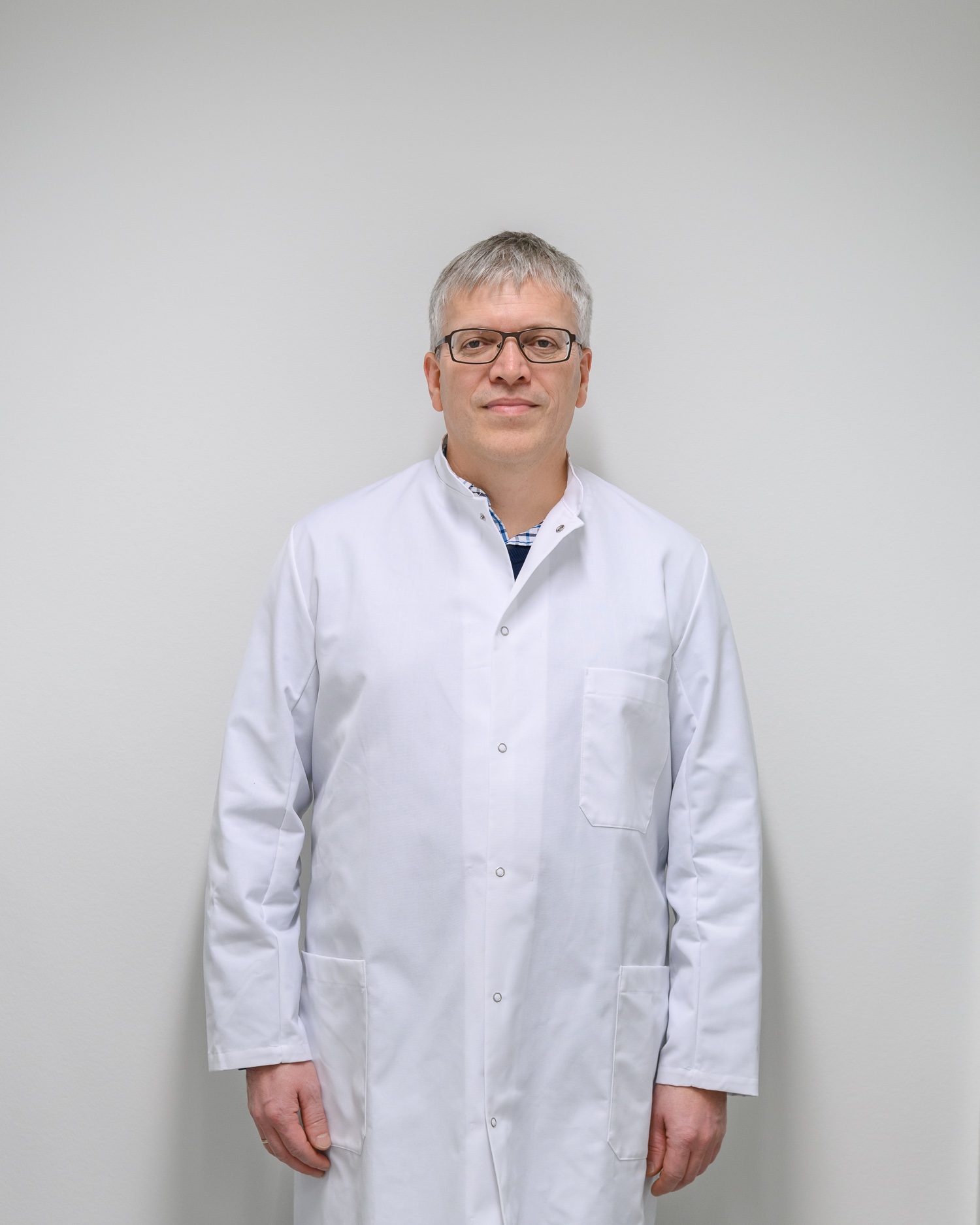The University of Copenhagen's new Future Consumer Lab is all about the future of food. What do we like, why do we like it, when do we like it and where do we like it? Through a series of experiments the lab aims to answer these questions and more. The sci-fi rooms are designed to remove exterior sensory stimulus so that the researchers can either test our reactions to foods and flavours without emotional baggage, or, though the use of virtual reality and other techniques (as in the photo above), place us in another world and see how we like the taste then. The participant above is enjoying her classic Danish lunch in a restaurant in the south of France, surrounded by waiters in black tie, with the sun shining through the window and the sound of the sea lapping at the shore.
Read Lisa Abend's original article for the April edition of N by Norwegian magazine below for more.
WE CAN SEE THE BIGGER PICTURE
Text by Lisa Abend for N by Norwegian magazine, April 2018
From VR to 3D printing, the Future Consumer Lab uses the latest tech
to analyse the way we eat. Could its findings ‘nudge’ us into better habits?
The room looks like the kind of place where aliens wielding scary-looking instruments might probe their hapless human captives. White walls, white floor, white ceiling... and in the middle, a white table and chair.
A white-coated researcher appears from behind a white door bearing a white contraption that’s meant to be strapped around the head – sparking flashbacks to every creepy sci-fi movie scene featuring invasive human experimentation.
Once in place, though, the device – a virtual reality headset – gives the wearer the sensation, not of starring in some terrifying film, but rather of being seated at a corner table in a cosy restaurant, with sunlight streaming through the windows, silverware clattering on plates, and black-clad waiters coming and going. And it does so in the name of better eating.
That room, and six other labs like it, is part of the University of Copenhagen’s new Future Consumer Lab (FCL): a research facility devoted to understanding how and why people make the food choices they do, as well as discovering ways to help them make healthier ones. Uniting different parts of the university’s cutting-edge Food Science department, the lab, which was inaugurated in January, also unites different scientific approaches to food.
"Usually these fields are separate,” says Professor Wender Bredie, who heads the FCL. “On the one hand, you have classic food science, which looks at the nutritional components of ingredients. On the other, there’s consumer behaviour research, which is about preferences and habits. The Future Consumer Lab brings them together so we can see the bigger picture.”
He means everything from the chemical compounds that go into making, say, a cup of coffee taste good, to how the shape of the cup affects how much a person drinks. In the FCL’s physiology lab, for example, a subject can be hooked up with a cap fitted with electrodes that measure her emotional response to a variety of aromas (and where, it has to be said, a red fleece blanket printed with hearts does little to diminish the Dr Frankenstein ambience).
In the observation lab, temperature controls can impart the sensation of being in a jungle or cool room, while place settings at a table hide finely calibrated scales that measure how much a subject eats and cameras hone in on the order foods are consumed. The flavour lab allows scientists to isolate the thousands of compounds that comprise the taste of an apple, for example, and learn which ones humans are sensitive to. In the simulation lab, VR headsets that put the diner in a restaurant, or even on a beach, enable researchers to judge the impact of different environments on appetite.
“We call it the Future Consumer Lab because we’re putting people at the centre of our work, and looking ahead,” says Bredie. “One of the things we can do here is help the food industry develop innovative products that will meet people’s needs.”
It’s no accident the FCL is located in Copenhagen, a city that’s no stranger to culinary innovation. The Danish capital is ground zero for the Nordic food movement, which features local ingredients and foraged plants (and even insects) in its quest to reflect the bounty and spirit of the region.
It’s also home to Noma, which recently reopened in a new building on a marshy edge of the city, and which – with its fermentation lab, test kitchen, and the wondrous things it does with reindeer lichen and centuries-old bivalves – remains one of the most influential restaurants in the world. Thanks in no small part to the numerous cooks and sommeliers who have passed through its kitchen and dining room, the city has become nothing short of a place of pilgrimage for the world’s gourmands.
It was Noma that first created the Nordic Food Lab, then housed in a boat docked just outside the restaurant, to develop new flavours and products, like peaso, a miso-like paste that delivers the smack of umami so important to Asian cuisine, but made from local peas, rather than soy. A few years later, the lab was incorporated into Copenhagen University; it now shares a building – and a working relationship – with the FCL.
On a recent morning, Yi-Ting Sun was awaiting the arrival of 40 squid, which she was planning to break down and begin preparing in different ways – some tentacles dried and braided into a kind of jerky, others marinated until they could be torn apart like pulled pork. This, it was hoped, might convince Danes to eat more of the locally abundant seafood.
But if the Nordic Food Lab is inspired more by the upper echelons of gastronomy, Bredie and his colleagues at the Future Consumer Lab are aiming firmly for the broader public. “It’s very nice what René Redzepi does at Noma. But if your concern is with the globe’s growing population, you have to have the mainstream consumer in mind.”
One of the things they’ve learned is that generations of mums were right: you really can learn to like your vegetables – or at least a sour northern berry – if you just try them enough. Working with two varieties of Nordic snack bars, Bredie saw that his subjects initially favoured the ones made from kamut, an ancient grain, over the ones flavoured with sour sea buckthorn. But after 10 exposures to the latter, Bredie says, they were eating it happily.
“At birth we have very few preferences besides one for sweetness,” he says. “How that blank sheet develops over time depends on genetics and physiology, but there’s also a very strong cultural component.”
Learning what people like to eat and why they favour certain things can reap insights into how to nudge people to make more sustainable choices. For example, colleagues at the lab have found that people will eat more salad if it’s placed at the beginning of a buffet rather than after the meat. It can also help people who struggle with appetite issues.
As part of the Eldorado research project, scientists at the lab found that adding toppings (like paprika or chopped parsley) made soup more palatable for the elderly – so they consumed more. Others are working with 3D printers in hospitals to “print” a cool, soft ice cream to encourage cancer patients, who often have difficulty eating, to get sufficient calories and nutrients.
“You can tailor a recipe on your iPad to specifically meet someone’s needs, then print it in layers so that the flavours are released gradually,” explains Bredie. “That keeps people eating longer.”
Of course in the West, much of the population struggles with too much appetite rather than too little. Here, too, Bredie and his colleagues hope to have an impact. Another soup experiment – this one with tomato – taught them that increasing the complexity of the base flavour by adding spice and chilli increased their subjects’ enjoyment of the food, but also made them satisfied with a smaller amount.
A series of tests within which gastric bypass patients were given an extremely high-fat drink revealed that, prior to surgery, they couldn’t detect the fat content and happily consumed a product that people of normal weight would find repulsively fatty. After surgery, however, the patients’ preference for high fat fell nearly to normal rates. Though more research needs to be done on the relationship, it’s possible, says Bredie, “That the obese have a disturbance in their reward system.”
What the lab is doing could have groundbreaking and far-reaching consequences, but there is a worry that their work could be easily hijacked. Industrial food producers have historically used flavour enhancement – in the form of fat, salt, or sugar – to make junk food irresistible and even downright addictive. Bredie admits that, funding needs being what they are, the FCL isn’t in a position to ignore the industry’s objectives, even in the best interests of their future consumers.
However, the lab does ultimately aim to enable food choices that are better for the environment and us humans. They are, for example, working with Danish Crown Ingredients to develop tasty and appealing ingredients from animal tissue, which will provide high-protein nutrition that supports food sustainability, health and culinary pleasure.
Take that VR simulation, too. Given a delicious- looking plate of smørrebrød and strapped into
the headset, elderly subjects – the same ones who frequently fail to get enough nutrients because of reduced appetite – ate more when they “sensed” they were in that cosy Danish restaurant, rather than at home, in the cinema, or even on the beach.
“Eating is such an intimate thing, the act of putting something in your body,” says Bredie. “That interaction between person and produce – it’s the essence of life. And yet there’s still so much to learn about it.”


